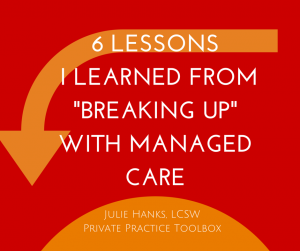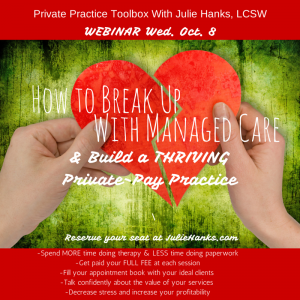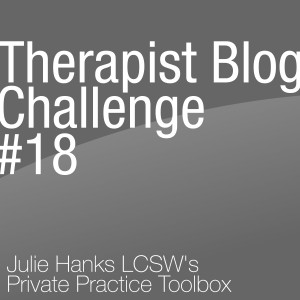 If there is anything you've taken from reading posts on Private Practice Toolbox, it likely has to do with the importance of having a strong online presence to educate and serve your community. There's a lot to consider: social media, blogging, podcasting, SEO, etc. But there's another aspect of building your practice that we haven't quite covered yet: newsletters.
If there is anything you've taken from reading posts on Private Practice Toolbox, it likely has to do with the importance of having a strong online presence to educate and serve your community. There's a lot to consider: social media, blogging, podcasting, SEO, etc. But there's another aspect of building your practice that we haven't quite covered yet: newsletters.
Newsletters are a tool you may consider implementing for your practice. A newsletter is a letter you send out to your clients and readers updating them on what's happening with your practice (it's a good idea to send them out monthly; you don't want to overwhelm your audience with too much from you, but you also don't want them to forget about you). They can be an effective way to connect with your readers and offer some insight on topics related to your specialty, inform them of any upcoming events or seminars, and just overall keep in touch.
Newsletter or Blog Post?
If you're continually producing fresh content, there's often a question of where to place it. Does it work better for a newsletter or for a blog post? While there will be some overlap between the two, there are significant differences between what type of content is best for what medium. Anyone can read your blog or site, but your newsletter is much more tailored and specific, and only people who have subscribed will receive it. These are local users who have shown that they have a specific interest in what you have to say. So while your blog is perhaps more for the purpose of acquiring new clients, a newsletter is best fitted for engaging with current clients.
Another thing to keep in mind is that when you have information to share that you feel would be valuable for both potential and existing clients, sometimes a slight adjustment in wording or format between mediums can make your content fit both a blog post and a newsletter.
Building Your List
Email marketing is one of the most effective ways to attract and engage with clients and is the means through which you'll facilitate your newsletter. This is where you create a list of contacts to communicate with via email. But acquiring a list takes time and effort. Some therapists choose to gather emails at speaking events and conferences. Others may ask for permission to leave a sign-up sheet at physicians' offices or other public settings. Also, providing an opt-in on your website or blog is another way to generate contacts for your list. If you are taking the time to create content for newsletters, you want enough readers to make it worth your while, and building your email list is key.
Programs for Email Newsletters:
Although some do choose to send hard copies of their newsletters, most opt to use emails (hard copies quickly get expensive, and dealing with home addresses can be very inconvenient). But in order to be more efficient and professional, you'll want to use another email program than simply Gmail or Yahoo. Some well-known systems for email lists include Mailchimp and Constant Contact. These both have free trial periods and then have varying prices depending on your number of subscribers and the volume of emails you send out. Thankfully, email marketing programs for your newsletters are not very costly investments; Mailchimp allows users to send unlimited emails to 500 subscribers for only $10 per month. Take time to experiment with the different features and automations of these programs, and they can be an invaluable part of your newsletter campaign.
Newsletters are yet another way to reach out to your community and get the word out about your private practice. Consider the time investment necessary, the potential results (acquiring new clients, having more individuals come to your events, gaining more blog readers, etc.), and the costs, and then decide whether they would be a useful tool for your therapy practice.
What are YOUR experiences with newsletters?
Get practice tips and blog updates in your inbox. Sign up for the Private Practice Toolbox Newsletter here.
Join my Private Practice Toolbox Facebook group and connect with 3100 therapists around the globe in 2 simple steps: 1) Click request to join the group and 2) Fill out this brief questionnaire before you’ll be added to the group.

 You’ve had tremendous success with your product. Explain some specific things you’ve been able to achieve with SimplePractice.
You’ve had tremendous success with your product. Explain some specific things you’ve been able to achieve with SimplePractice.




As healers, we genuinely like to do our work. Guiding clients through the therapy process and seeing them make progress is why we do what we do. But if you're in private practice, you know there's a lot going on in the back end and that it's crucial to run an efficient and organized business.